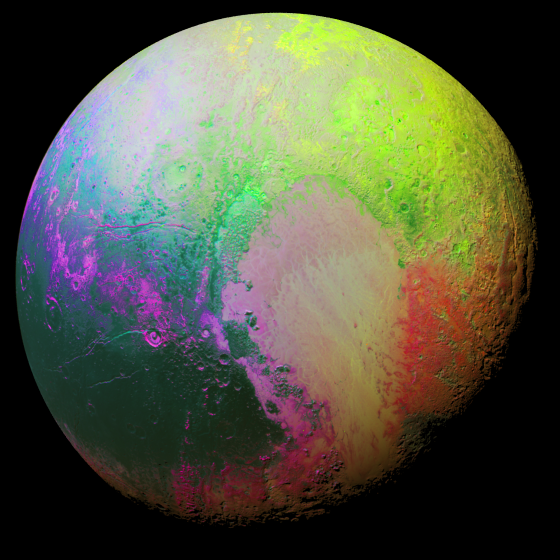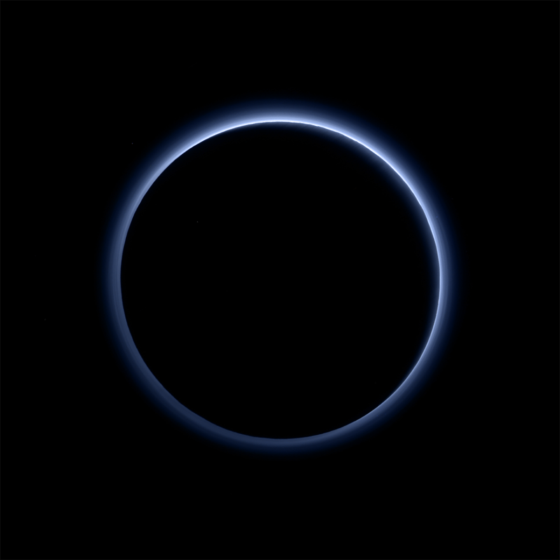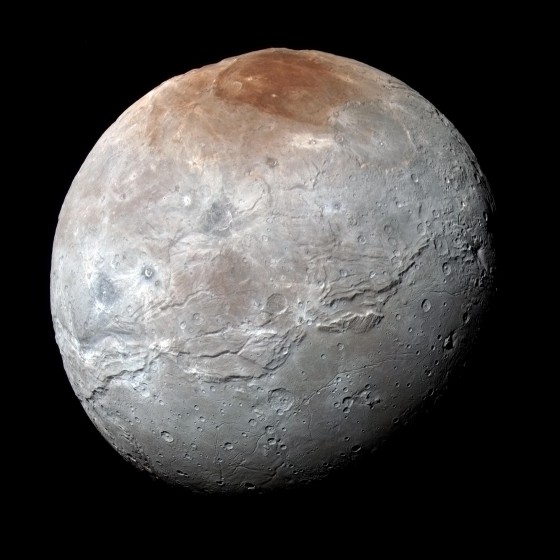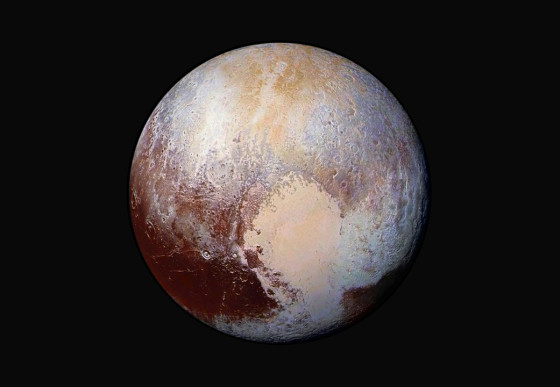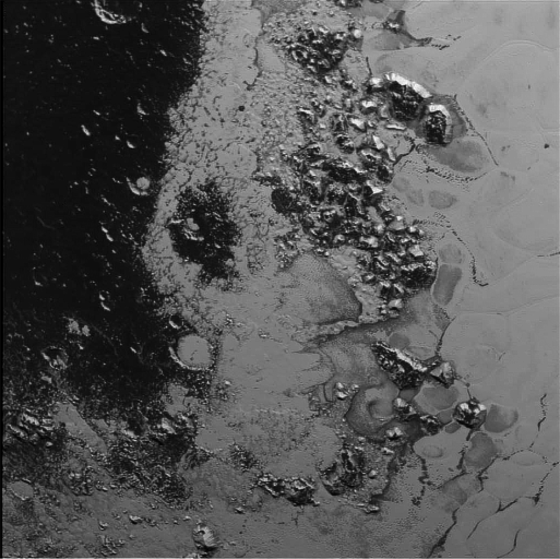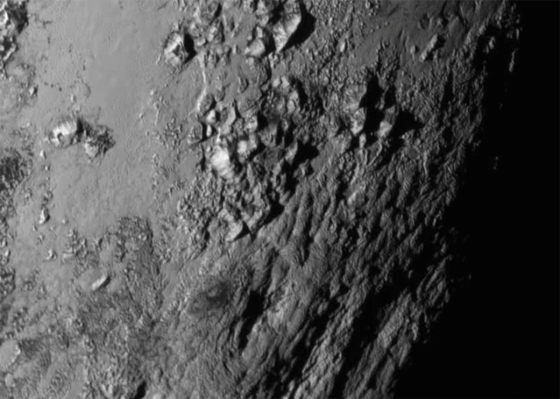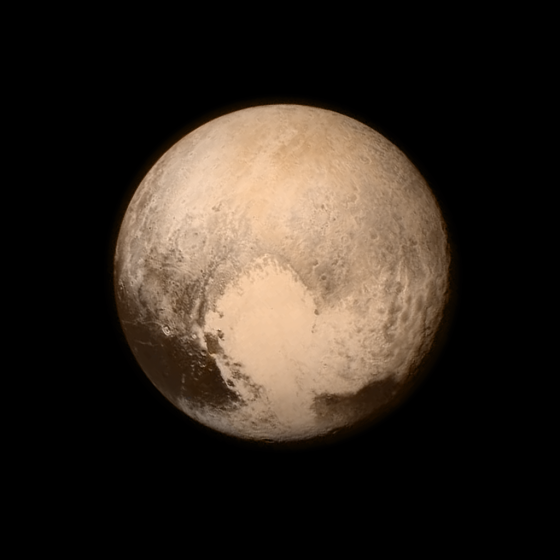#November2015
Space Swoon: Pluto’s moon Charon in enhanced color
Goddamn gorgeous. Just Pluto. Not being a moon, but having a moon? Wild. Insult. Gorgeous.
Watch: The Pluto System as seen by NASA’s New Horizons spacecraft
NASA has dropped another glimpse of the Pluto system, courtesy of New Horizons. Futzing 2015, yo. Just living in a year where we’re being beamed glorious quasi-footage from a goddamn Dwarf Planet way out there in the solar system. Glorious. Glorious.
NASA’s New Horizons finds second futzing mountain range in Pluto’s “heart”
A newly discovered mountain range lies near the southwestern margin of Pluto’s Tombaugh Regio (Tombaugh Region), situated between bright, icy plains and dark, heavily-cratered terrain. This image was acquired by New Horizons’ Long Range Reconnaissance Imager (LORRI) on July 14, 2015 from a distance of 48,000 miles (77,000 kilometers) and sent back to Earth on July 20. Features as small as a half-mile (1 kilometer) across are visible.
Pluto’s icy mountains have company. NASA’s New Horizons mission has discovered a new, apparently less lofty mountain range on the lower-left edge of Pluto’s best known feature, the bright, heart-shaped region named Tombaugh Regio (Tombaugh Region).
These newly-discovered frozen peaks are estimated to be one-half mile to one mile (1-1.5 kilometers) high, about the same height as the United States’ Appalachian Mountains. The Norgay Montes (Norgay Mountains) discovered by New Horizons on July 15 more closely approximate the height of the taller Rocky Mountains.
The new range is just west of the region within Pluto’s heart called Sputnik Planum (Sputnik Plain). The peaks lie some 68 miles (110 kilometers) northwest of Norgay Montes.
This newest image further illustrates the remarkably well-defined topography along the western edge of Tombaugh Regio.
“There is a pronounced difference in texture between the younger, frozen plains to the east and the dark, heavily-cratered terrain to the west,” said Jeff Moore, leader of the New Horizons Geology, Geophysics and Imaging Team (GGI) at NASA’s Ames Research Center in Moffett Field, California. “There’s a complex interaction going on between the bright and the dark materials that we’re still trying to understand.”
While Sputnik Planum is believed to be relatively young in geological terms – perhaps less than 100 million years old – the darker region probably dates back billions of years. Moore notes that the bright, sediment-like material appears to be filling in old craters (for example, the bright circular feature to the lower left of center).
This image was acquired by the Long Range Reconnaissance Imager (LORRI) on July 14 from a distance of 48,000 miles (77,000 kilometers) and sent back to Earth on July 20. Features as small as a half-mile (1 kilometer) across are visible. The names of features on Pluto have all been given on an informal basis by the New Horizons team.
Pluto is a geologically active world. And we don’t know why. Amazing.
Pluto just got more interesting! Like, don’t get me wrong. Pluto. You were interesting before. But now with the news that you’re geologically active, and we have no stinking idea why? Now you’re a delicious mystery wrapped in a former-planet.
NASA publishes highest-resolution photo of Pluto ever, after New Horizons Fly-By
The New Horizons probe fly-by of Pluto has yielded the highest-resolution photo of the Former Planet ever. And it’s goddamn stunning.




